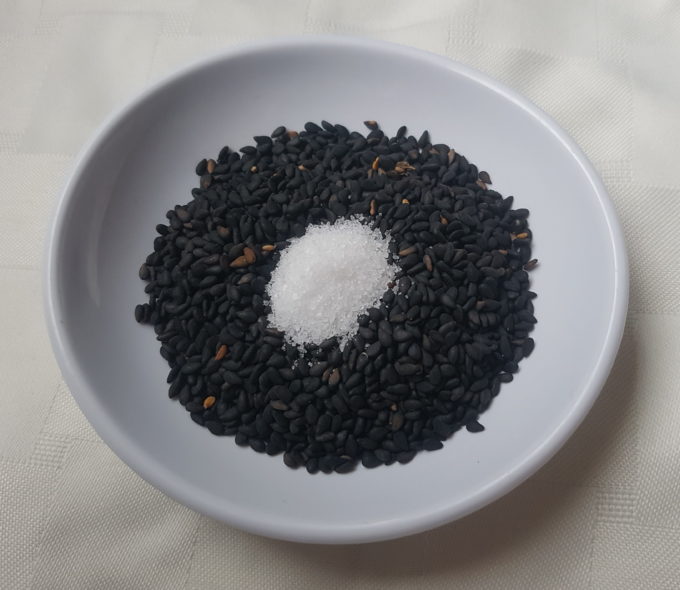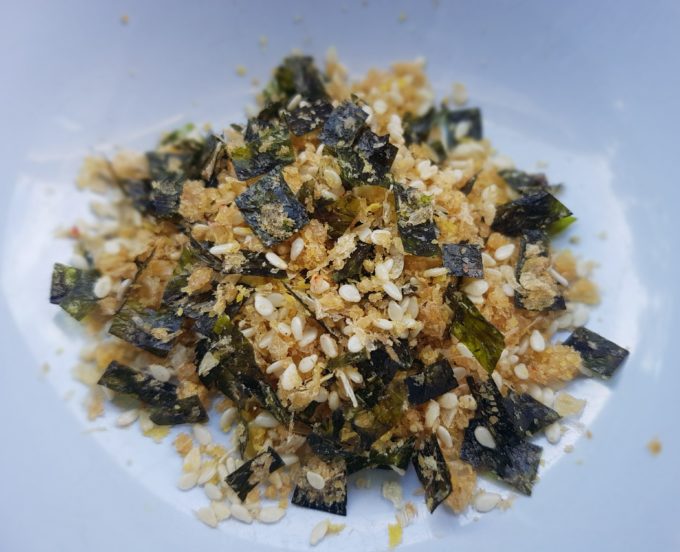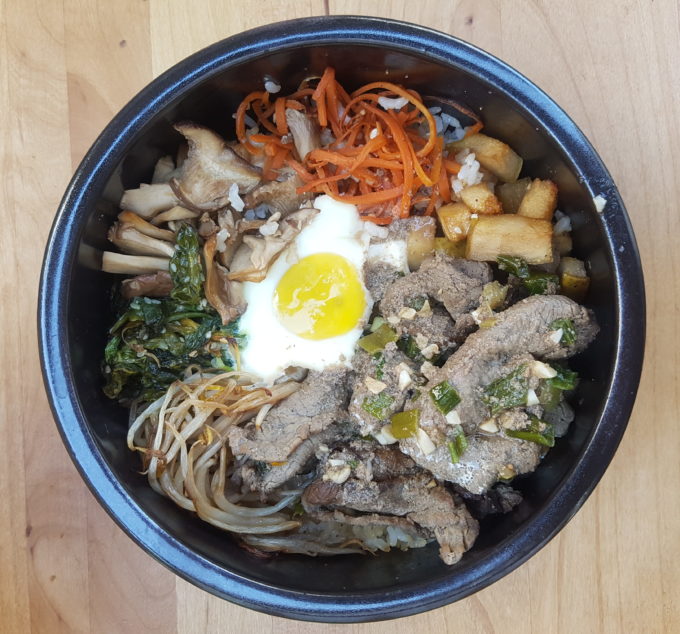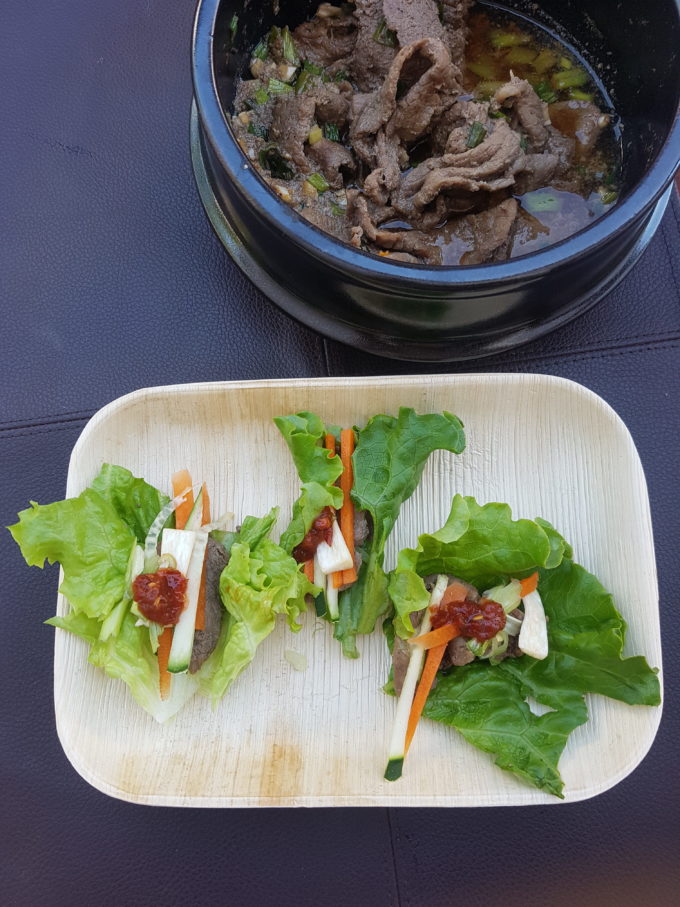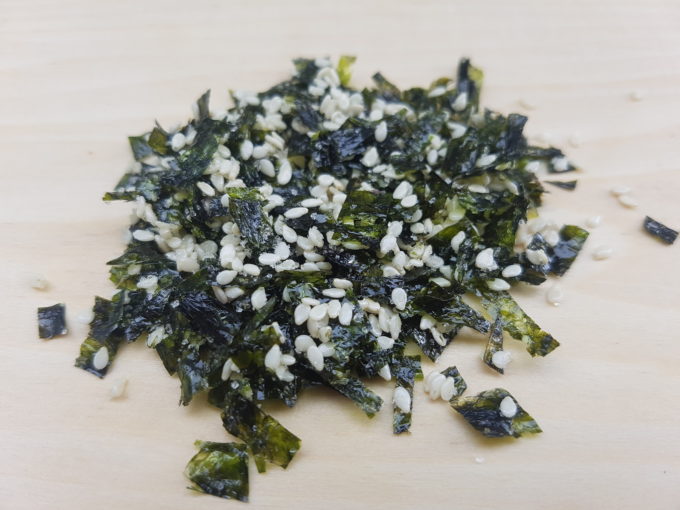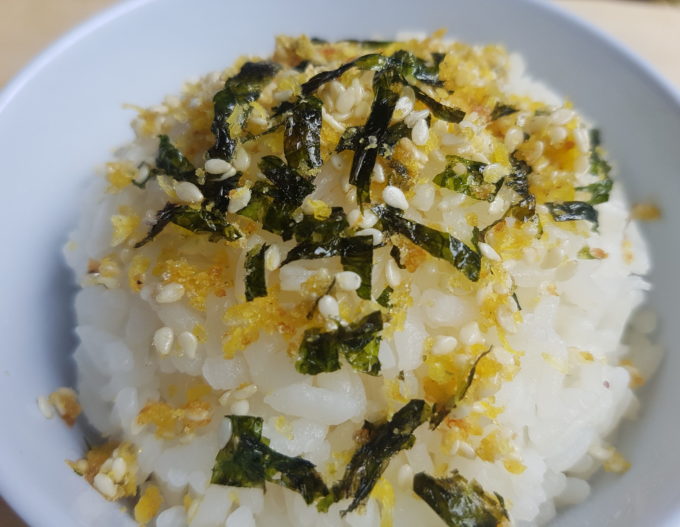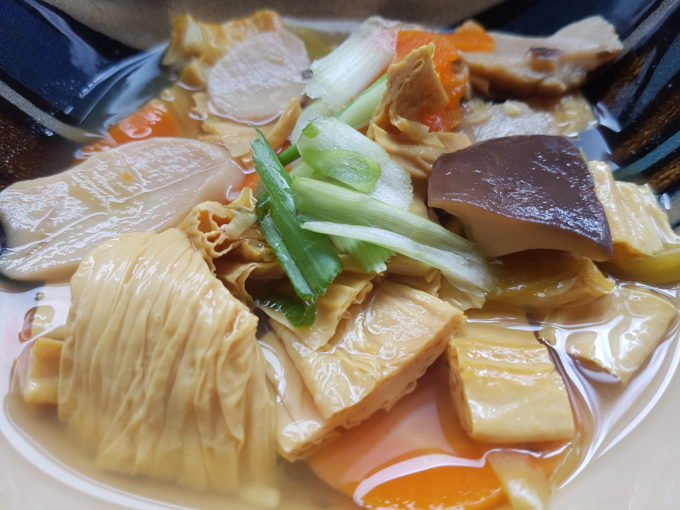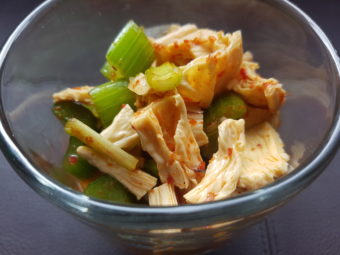Yes, that is a spoof off barbecue, but no, I did not make it up. It is indeed a real thing, and a really popular thing! Also known as banana-Q, it’s actually quite funny in that these simple sweet treats are not actually barbecued, but rather fried and then served on barbecue skewers. This faux […]
Read moreThis is the most basic of Furikakes. Simply unhulled sesame seeds and salt. It has been used in Japan for thousands of years over rice, fish, and a multitude of other dishes, but has gained some more recent fame as a lower sodium substitute to straight salt. Using a ratio anywhere from 15:1 to 5:1 […]
Read moreThis Furikake, or rice seasoning containing sesame seeds and salt, is entitled ebi fumi, for shrimp flavor. Both one of the sweeter and crunchier furikake, this recipe is quite easy to make. I always appreciate a home made furikake over store bought. Not only for it’s drastic price difference, but also because there are so many […]
Read moreBibimbap is an incredibly versatile dish. Meaning literally ‘Mixed Rice,’ it is perfect for left overs or pre-made banchan. You simply add your desired sauteed, steamed or fermented vegetables of choice, typically along with bolgogi beef, to a hot bowl of crisping rice, and top it with a poaching egg. Although the meat and vegetables […]
Read moreThis incredibly easy to make recipe is a fan favorite of both adults and children. It doesn’t require very many ingredients, all easy to come-by, or any special equipment. …Although using a dolsot or ddukbaegi pot sure is fun! The name Bulgogi (불고기) comes simply from the Korean’bul’ for fire and ‘gogi’ for Meat. You […]
Read moreFirst, let’s distinguish the difference between a dolsot, a stone pot with a stone or wooden lid, and a ddukbaegi (sometimes written ttukbaegi), a ceramic pot that typically comes with no lid, although they are available. Besides the obvious appearance, the price tag is one of the first major differences. Here in Anchorage, and it […]
Read moreOne of the things I love about cooking new Asian foods is learning how to translate their names. Nori Komi took me a while to figure out. Not the nori part. That’s really easy; ‘seaweed.’ To be specific it’s a type of seaweed, nori. But the komi part took me a while to track down. […]
Read moreThe base for any furikake is sesame seeds and salt. The name noritama comes from nori, or ‘sea weed,’ and tama, short for tamago, which means ‘egg.’ This ‘sprinkle’ for rice is hugely popular not only in Japan but all over the world. Noritama furikake is easy enough to purchase, even common in many US […]
Read moreI have been very excited to finally have an excuse to buy the beautiful king oyster mushrooms that are currently in season. Raw, these large mushrooms have a pleasant aroma similar to a good sourdough, but when simmered they bring incredible umami flavor to a dish. The other main ingredient, dried bean curd sticks, take […]
Read moreThis recipe was created after my recent discovery of dried bean curds. There are a lot of recipes floating around for simple salads and soups using these tofu skins, but I so much enjoy kkakdugi (Quick Korean Radish Kinchi) that I thought for sure you could use bean curd sticks for a similar snack. After […]
Read more

